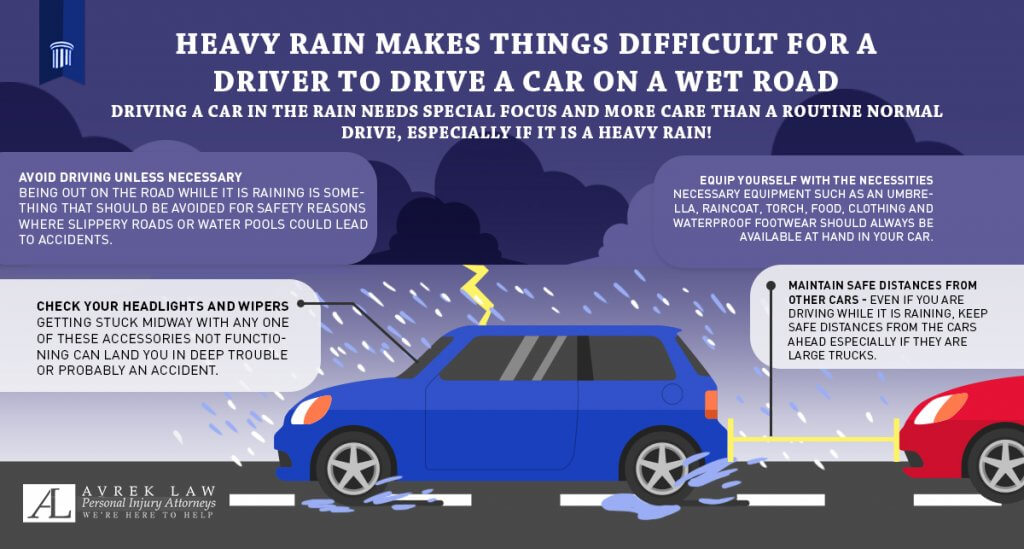Heavy rain can mean a lot of things for a driver, and most of these are not very pleasant – ranging from road flooding and vehicle breakdown to accidents. Heavy rain reduces visibility and also causes the tires to lose traction, increasing the risk of aquaplaning. Fortunately, there are many ways to manage, even mitigate, such risks.
With a little preparation and little know-how, driving in heavy rain this winter can be made significantly safer. The following tips should help you make the best decisions.

Preparation
Planning in advance is crucial. Highly important, too, is your knowledge of main roads and alternate routes. You should plan ahead to create a contingency plan in the event your regular route proves to be impassable.
Make sure your vehicle is in tip-top condition including the tank being full (Being caught in traffic uses up more fuel), wipers and lights functional, and mobile phone fully charged. Of course, if the weather’s really bad and a risk to your own or others safety, then you should call it a day.
Driving in Heavy Rain
Most people know that if you’re driving along and it suddenly starts chucking it down that windscreen wipers are the obvious savior. However, if visibility is seriously reduced then you must use your headlights. If you feel that the visibility of the road is still lacking, then use your front fog lights as long as you remember to turn them off when you feel that visibility has significantly improved. Check your car’s lights on a regular basis and before you set off for pieces of dirt or anything else that may decrease visibility.
Rain affects stopping distances so remember to keep a fair distance between you and the car ahead (At least three cars length) To ensure you have enough space in front of you in case you happen to skid.
Driving Through Standing Water
Sometimes, you’re so desperate to reach your destination that your judgment is clouded. You could be tempted to take the risk of driving through what initially seems like ankle-deep water-only to discover to your horror that the water’s way deeper than you thought, drowning the engine. The rule is never drive through floodwater, especially if it’s fast moving. If the roads look completely flooded and knee-deep, then leave the car at home.
Avoid Aquaplaning When It’s Raining
Feeling like you’ve completely lost control of your vehicle is an experience all of us fear. The feeling of your tires gliding across the water’s surface is, of course, aquaplaning. This is caused by the loss of traction and generally happens when it’s raining heavily. You can help to prevent your vehicle from aquaplaning by regular tire maintenance, reducing your speed in wet weather conditions and even driving in the tracks of the vehicle in front.
Should your vehicle aquaplane, change to neutral and steer in the direction you want to go. Do not brake or accelerate.
Breaking down in the rain
If you do happen to break down during harsh weather conditions, then simply pull over in a safe and secure place. Don’t attempt to find the cause of the problem by opening the bonnet, as excessive amounts of water in the bonnet will make starting the engine a lot more difficult.

In short, trust your guts. If you feel that it is dangerous to go out, then don’t! We care about your safety, so if you run into trouble, we’re here for you!
How much is your case worth?
Get a free case evaluation